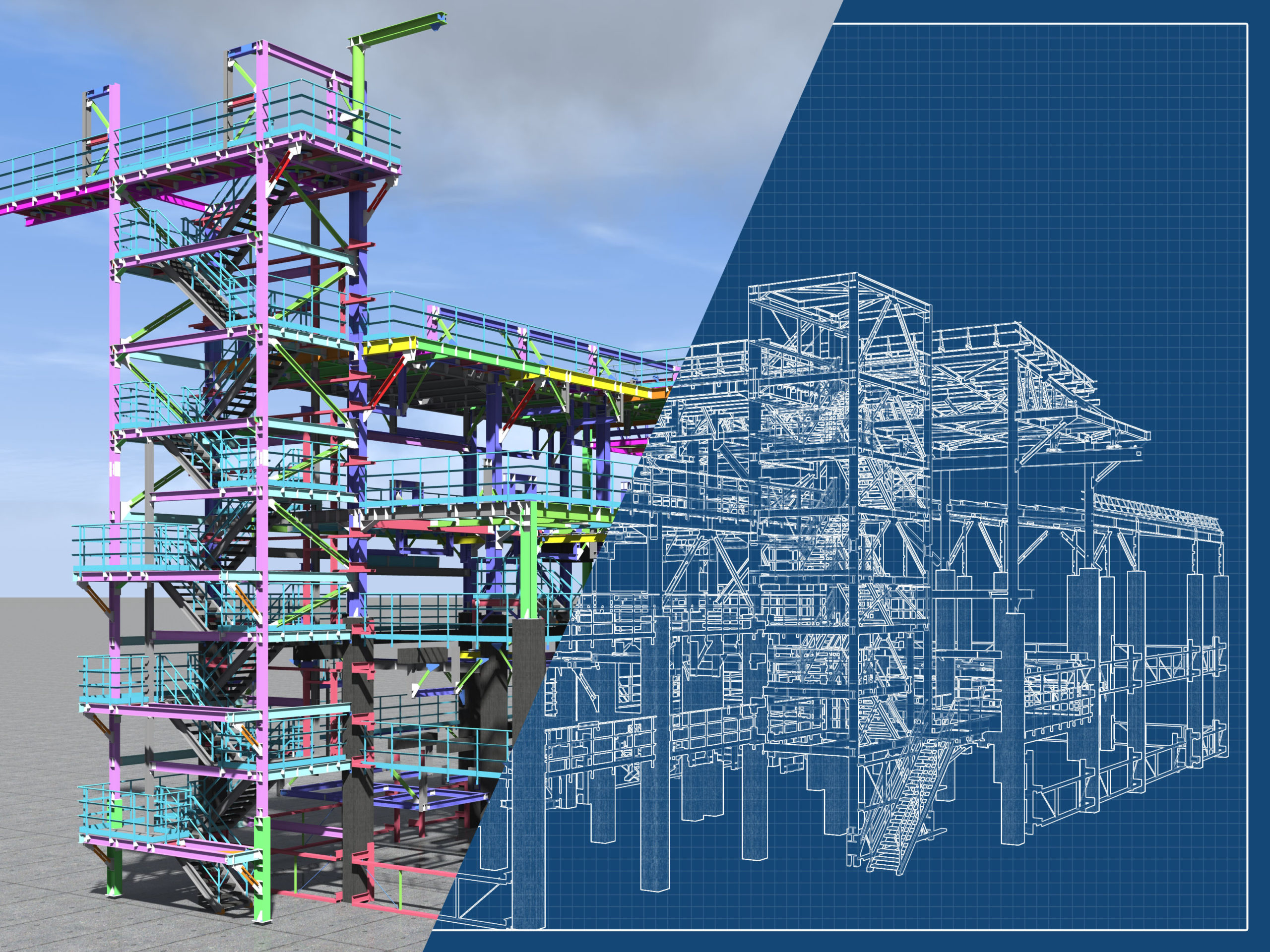BIM Expert - Building Information Modeling Expert
Building Information Modeling - BIM Expert Philadelphia OfficeHow a BIM Expert Manages Risk
A Building Information Modeling Expert, or a BIM expert is someone with experience in engineering and modeling software. He or she knows that BIM is a great tool when used correctly. Conversely, a BIM expert also knows BIM is a leading contributor to engineering and construction defects and delays when used improperly. Chiefly, BIM is a powerful, digital 3D model used to plan, design, engineer construction information for a project. BIM can optimize architecture, construction, plant, MEP (Mechanical, Electrical, Plumbing) and civil efforts for a project. Further, BIM can also be used for project scheduling, tracking, costing and project maintenance tasks. Common BIM packages include Navisworks, AutoCAD MEP, Revit, Autodesk BIM 360, Vectorworks and SmartPlant3D etc.
Using BIM, a BIM expert can identify “clashes” of improperly located components in the 3D model. Specifically, a clash is where a pipe and a structural beam are located at the same location in the BIM. A BIM expert can identify clash defects early in process and avoid construction defects and delays. Alternately, clashes in the BIM not identified until later in the project cause cost and time additions for the project. Certainly, rework is expensive! Connect with a Cogent resource for your BIM Expert Philadelphia, Baltimore, Washington DC, New Jersey, New York, Texas, Chicago or Boston needs.
BIM Related Construction Defect & Construction Delay and How a BIM Expert Avoids Risk
Clearly, BIM has been centric to numerous construction defect and delay cases we have been involved with over time. Generally, errors and omissions in the BIM caused project schedules delays, defects and CO$T. A false sense of security can arise due to BIM use on a project. Specifically, incorrect assumptions regarding the completeness and accuracy of the BIM can develop. Typical BIM errors a qualified Building Information Modeling expert can identify include: (1) coordination issues and collisions, (2) missing information for equipment (3) Material Take-Off Issues (MTO) and costing errors, (4) revision control issues, (4) database issues, etc. “Garbage in, garbage out.”

BIM Risk Management
Albeit, while BIM issues and defects are fairly common, risk management techniques employed by BIM experts can significantly limit construction delay and construction defects. Some high-level and fundamental risk management methods used by Building Information Modeling expert are described below.
BIM Project Management by a Qualified Building Information Management Expert
Simply, a BIM expert ensures proper BIM management. Success in any engineering and construction project relates to this, period. Make this first priority! Be sure to have at least one true BIM expert on the project team. With poor leadership and management, efforts quickly erode.
Additionally, strong project leadership provides a good scope of work, management, leadership, communication, resolution of conflict, and the solving of problems. Good leadership will quickly understand BIM is a key aspect of any project.
Training of BIM System Users – How to Become a BIM Expert
Firstly, a very basic approach for the use of any tool includes proper training for any user of said tool. This is true for BIM modeling for the design and engineering of a structure, building and/or facility. Hence, BIM training should be considered paramount for any project utilizing BIM as both basic and complex BIM errors can quickly propagate throughout the project model, compounding defects and impact. BIM training should include classroom or “book” training, as well as real world project experience using BIM software under the supervision of qualified BIM resources. Obviously, accredited training and qualifications worth considering for your BIM operators and engineers. You don’t want BIM clashes!
A BIM Expert Needs to Develop & Review for Accuracy and Completeness
Once qualified BIM resources, ie. – a bonafide BIM expert whom has developed a given project, the review and analysis of BIM models should be required and performed on a protocoled basis so a thorough understanding of the BIM by the project team exists. This is especially important if and as BIM models are passed between parties in the course of business. This may be between as differing design firms or between owners, bidders and constructors etc. An improper review of the BIM during a “handoff” of the BIM can be an “Achilles Heel” of a project! Cogent is located in the Philadelphia area and provides BIM expert solutions worldwide.
Communication Protocol Between Project Team(s), BIM Teams
Information sharing is key on any project, and especially important regarding BIM efforts. This results from the fact of the sheer magnitude and complexity of many BIM efforts can be staggering. BIM models may literally contain millions and millions of elements, construction components and systems.
As an example of good communication, piping changes made in the BIM may be made by a mechanical or Mechanical – Electrical – Plumbing (MEP) designer, should be communicated openly to the broader project team inclusive of civil, structural, electrical, fire and life safety, process designers and engineers etc. This is very important as these various project designers and engineers can review the changes which may have impact on his or her area of responsibility, discipline, or expertise on the project. Resulting issues of any changes can then be mitigated and resolved collectively, avoiding unknown error propagation in the BIM. NOTE: Unknown errors are the archenemy of the BIM, and can quickly lead to compounded construction defects, delays and subsequent costs. Communication is a team effort on any project, and requires a strong managerial support framework to run effectively.
Management of Change (MOC) Process for the BIM
Management of Change (MOC) is an important (and not new) concept regarding engineering, construction and operation of commercial and industrial facilities and operations. Good, and I stress “Good,” engineers, project managers and facility operators know this from experience. MOC is a systematic method used to manage change, such as organizational, design, engineering, and personnel changes. In the instance of BIM on a construction project, protocols regarding BIM or BIM personnel changes are hard requirements so changes can be evaluated, mitigated, documented, communicated and MANAGED. The first, and most important part of an MOC process is to know that you need an MOC process, and to implement and manage the MOC process using a qualified MOC resource or expert.
Summary
In review of many BIM issues and construction defects and construction claims, it is clear that the use of basic BIM risk management methods and protocols as discussed above would have rendered less engineering and construction defects on relevant projects. In today’s world, knowledge is KEY. Don’t be in the dark on project BIM!
And while the BIM Risk Management techniques described herein may be considered high-level in nature, they are very important aspects regarding project BIM. Should failure occur in these managerial aspects of BIM, the resulting problems in BIM are likely to propagate and become widespread, substantially increasing project risk and cost. Additional BIM risk management methods and techniques are beyond the scope of this article and will perhaps be the content for an additional series of articles.

